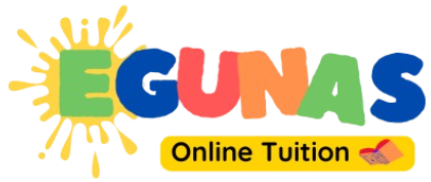Kids Math Multiplication
1. What Is Multiplication?
Multiplication is a mathematical operation where a number is added to itself a certain number of times. It’s a quick way of doing repeated addition. The symbol for multiplication is the asterisk (×) or a dot (·).
Example:
3 × 4 = 12
(Here, 3 is multiplied by 4, which means 3 + 3 + 3 + 3 = 12.)
2. Basic Concepts of Multiplication
- Multiplicand: The number being multiplied (e.g., 3 in 3 × 4).
- Multiplier: The number that tells how many times to multiply (e.g., 4 in 3 × 4).
- Product: The result of multiplication (e.g., 12 in 3 × 4 = 12).
- Multiplication Symbol (× or ·): Used to indicate multiplication.
3. How to Teach Multiplication
A. Repeated Addition
Help kids understand that multiplication is repeated addition.
- Example:
4 × 3 = 4 + 4 + 4 = 12
(Adding 4 three times)
B. Grouping Objects
Use objects like blocks or counters to create equal groups.
- Example:
- 3 groups of 5 apples: 🍎🍎🍎🍎🍎 + 🍎🍎🍎🍎🍎 + 🍎🍎🍎🍎🍎
- Total: 15 apples (3 × 5 = 15)
C. Multiplication on a Number Line
Use a number line to demonstrate repeated jumps.
- Example:
- Start at 0 and make 4 jumps of 3:
- 0 → 3 → 6 → 9 → 12 (Answer: 12)
- Start at 0 and make 4 jumps of 3:
D. Arrays and Grids
Teach multiplication using rows and columns.
- Example:
XXXXXXXXXXXX- (4 rows of 3 = 12, so 4 × 3 = 12)
4. Multiplication Facts and Tables
Learning multiplication facts (times tables) helps build speed and accuracy.
- Start with easier tables (like 2, 5, and 10).
- Gradually move to harder tables (like 6, 7, 8, and 9).
- Use rhythmic songs or chants to memorize tables.
5. Properties of Multiplication
A. Commutative Property
The order of multiplication does not change the product.
- Example: 3 × 4 = 4 × 3 = 12
B. Associative Property
Grouping does not change the product.
- Example: (2 × 3) × 4 = 2 × (3 × 4) = 24
C. Distributive Property
Multiplying a number by a sum is the same as multiplying each addend separately and then adding the products.
- Example: 3 × (4 + 2) = (3 × 4) + (3 × 2) = 12 + 6 = 18
D. Identity Property
Any number multiplied by 1 is the number itself.
- Example: 5 × 1 = 5
E. Zero Property
Any number multiplied by 0 is always 0.
- Example: 7 × 0 = 0
6. Multiplication Strategies
A. Skip Counting
Counting by numbers to find the product.
- Example: Count by 5’s for 5 × 4: 5, 10, 15, 20
B. Using Fingers (for the 9 Times Table)
Hold up all 10 fingers and fold down the finger corresponding to the number you are multiplying by 9. The number of fingers to the left of the folded finger shows the tens, and to the right shows the ones.
- Example: 9 × 4: Fold the 4th finger → 3 on the left and 6 on the right = 36
7. Word Problems
Applying multiplication to real-life scenarios.
- Example:
- Problem: “If each pack has 5 candies and you have 4 packs, how many candies do you have?”
- Solution: 4 × 5 = 20
8. Fun Multiplication Activities and Games
- Multiplication Bingo: Find the product on a bingo card.
- Flashcards: Quick recall of multiplication facts.
- Times Table Songs: Rhythmic patterns to make memorization fun.
- Multiplication Puzzles: Matching problems with answers.
- Dice Rolling Games: Multiply the numbers rolled on two dice.
9. Tips for Parents and Teachers
- Start with small numbers to build confidence.
- Use real-life examples to make learning relatable.
- Practice regularly with fun games and exercises.
- Praise kids for correct answers to build confidence.
